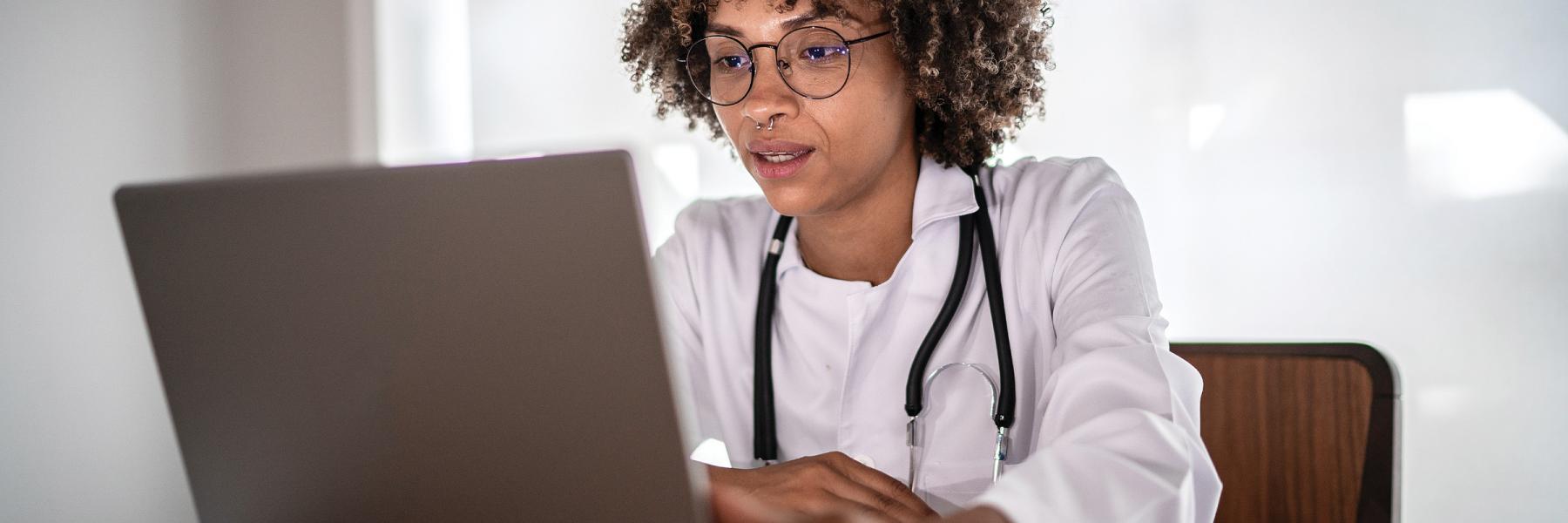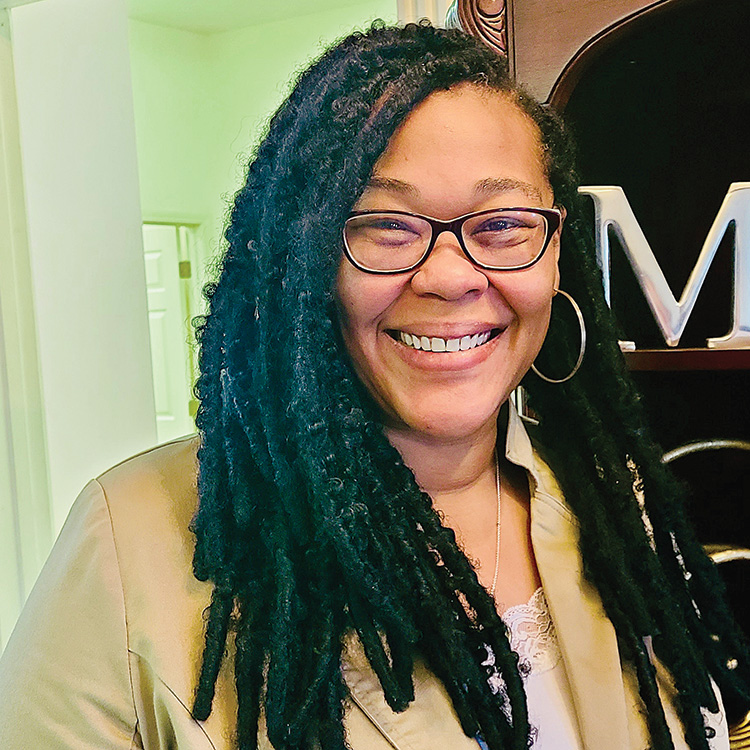
The year 2021 saw the United States emerge—carefully—from the COVID-19 shutdown of 2020. But the world has been forever changed. Healthcare has seen more patients interact with their doctors via the internet or phone instead of face-to-face visits. Many drop-in clinics for HIV testing—created for greater convenience—had been closed down. Appointments became the norm again to help space out the people coming in. Or home tests were mailed out. For HIV care, people could even prick themselves at home to obtain a blood sample and send that to their clinic. Telehealth and telemedicine—combining electronic information with telecommunication technologies to support remote healthcare—is here to stay and continues to evolve. “I do not feel that we’re going back to the way things were,” said June Gipson, PhD, president and CEO of My Brother’s Keeper, a non-profit HIV service organization in Jackson, Mississippi that also runs a medical clinic. “I hope we don’t go backwards.”
The virtual heartbeat
David Goodman-Meza, MD, an infectious disease specialist at the University of California-Los Angeles (UCLA) David Geffen School of Medicine, and colleagues and community advocates in September celebrated the launch of a new mobile unit that brings clinical care to people who inject drugs (PWIDs) in Long Beach. (See sidebar, Needed Now More Than Ever.) Ironically, the van was planned long before COVID-19 even hit. Providence.
While UCLA’s newest mobile clinic was just a few months old as this issue went to press, Dr. Goodman-Meza had by then a lot of experience with changing technology under COVID-19 and beyond.
“We all use electronic medical records where we capture our data, including every doctor visit,” says Dr. Goodman-Meza. “Other than that, there was very little use of technology other than the phone. COVID spurred the need for us as providers to adopt telemedicine for the protection of our patients, our staff, and ourselves. So we rapidly piloted it and now this is the norm. It’s going to become more common to see your provider over telemedicine compared to in-person visits.”
Dr. Goodman-Meza also sees a larger future for at-home monitoring tests. “A lot of the things that we ask people to come to the clinic for can really be done at home. Glucose monitoring is already done at home. Blood pressure monitoring can be done at home and maybe even better than if you come to the clinic. I’m part of a weight loss program where they sent me a scale that automatically transmitted my weight to the program. I know cardiologists use these remote systems as well.”
The flip side is providers becoming more comfortable using telemedicine services. “I think a lot about seeing somebody in person [is] to establish a relationship. I think of somebody who may be living far away in a rural area with no provider in a 50-mile radius. It’s burdensome for somebody to drive an hour or more to go see a doctor. That readiness to have a virtual visit over videoconferencing and connect to a provider creates convenience. The physical exam is the most limited piece, but for most interactions, you could probably go without one, especially with routine check-ups,” he says. “Of course, if someone has physical complaints, a physical exam is warranted and helpful. You need to palpate the stomach to measure pain, for example. But even then, there are going to be all these ways of doing a physical exam virtually in the near future. There’s probably already the development of a virtual stethoscope that patients place on their chest and the provider can hear wherever they are.”
‘People want a hybrid model. It can’t really be a one-way street anymore in which you have to come in or you have to stay at home.’ —June Gipson, My Brother’s Keeper
Then there’s the decentralization of medical care. Providers are seen over the internet, labs are picked up somewhere outside the provider’s office, and vaccinations are done at the pharmacy. “So we’re getting services away from the doctor’s office and much closer to where people are actually at,” he says.
But electronic health records need to be further developed and then maintained.
“That’s been the ever-present problem with electronic medical records, updating software. They’re getting better. We’re now employing some systems where we can share our records more seamlessly, but we still have a world of improvement to go.”
Then too, the public needs to get more comfortable with telemedicine as well.
“As we rely more on technology, we make it more convenient for some but technology will create barriers for others,” he says. “I’m totally for relying more on technology and using its benefits, but we also have to have the old school options always available to people.”
Pandemic-ready
My Brother’s Keeper operates the Open Arms Healthcare Center in Jackson, Mississippi, which focuses on the local LGBTQ community. Like many—maybe most—clinics, Open Arms uses electronic health records (EHR). But theirs had an important difference.
“Most electronic health record systems didn’t have telehealth attached. We were just fortunate enough to have a system that has a built-in telehealth component. We’ve been doing telehealth since 2015. So you can essentially say that we were ready for a pandemic and didn’t know it,” says June Gipson. “We literally just flipped a switch. Everyone on staff was trained to do it and patients were familiar with it. So it wasn’t a headache for us.”
Electronic records help the clinic keep track of what patients need. “Data tells us everything. We don’t move without data,” Gipson says. “The electronic health record system is telling us what’s happening with the patient. It’s telling us what’s happening in the community.”
Got labs?
Open Arms also had a van travel out statewide, providing a program called Becoming A Healthier You. Blood draws were taken to measure glucose and cholesterol, and test for HIV, syphilis, gonorrhea, and chlamydia, as well as hepatitis B and C. Blood pressure was taken and body mass index measured. Many people used the program as their only health care access, and many transitioned into clinical care through it.
Then came COVID.
“When we started, I didn’t have any idea of sending labs to your home. I was thinking that we would do telehealth visits, but you would still go to the clinic and have us draw your blood. And we did that. Then we found another way of doing it and that’s another part of technology,” Gipson says.
During the shutdown that began in spring 2020, lab kits were mailed to people’s homes, where they took their own blood sample with a finger prick and mailed it back. “That’s going to be a way that healthcare is going to be done with telehealth,” she says. “It’s going to make life a bit more convenient, and we can modify that kit to include screenings specifically for people living with HIV.”
As stay-at-home orders lifted and more people were able to return to the clinic, things didn’t go back to business as usual.
Gipson says she found that “people want a hybrid model. It can’t really be a one-way street anymore in which you have to come in or you have to stay at home. You may have four visits a year as a Ryan White [HIV care] patient where you only do one at the clinic. You may decide you want to do two. There’s a connection that patients like to have with their clinician where they want to see them, but they’re living lives and they’re going to be busy. So I think the hybrid model of healthcare is the way to go, where you’re providing a face-to-face option and you have an online telehealth option. You can go back and forth.”
Aging in place with dinner and a movie
Open Arms also runs a wellness program for older adults living with HIV that has a strong social aspect. The popular program sends people out to dinner and a movie. It provides free massages, facials, and pedicures. While My Brother’s Keeper serves a primarily African American clientele, the wellness program attracts a diverse group of participants—Black, White, and Latinx, gay and straight, men and women.
“We do a lot of health care, but we want a component of wellness to make people happy. We’re under the impression that when you are happier, you feel better. When you are happier, you take your medication,” Gipson says. “We know there’s a whole host of things like loneliness and getting sick with just getting older. But then when you add HIV on top on that, you’re going to age differently. So we added wellness.”
Then came COVID.
The group continued to watch movies together, but from home using free iPads provided to members. Food was also sent out to their individual homes. Participants were taught how to use Zoom for their gatherings over the internet.
They also used Zoom to attend fitness classes, with free Fitbits, dumbbells, and blood pressure cuffs sent to their homes.
Today, they come together in person once again or through their computer, whichever they prefer at the time.
“It turned into a very successful component of the aging program that we have,” says Gipson. “It’s one of the good things that happened with COVID. COVID gave you the opportunity to think outside the box.”
She noted that by 2050, the U.S. will have three times as many 100-year-olds as there are now. But healthcare is set up for babies, not the aging population, she says.
“Anybody who’s getting older should be able to experience wellness and company, having someone to talk to daily, because that’s a huge part of your health at some point. Nursing homes don’t want to come see you. If we’re going to be older, we need to have mechanisms that make sure that we’re able to keep people in the loop regardless of how old they are.”
Open Arms is on track to provide 100 free iPads this year. “I think telehealth is going to become a huge part of what we want to do. So it behooves us to put mechanisms in place to make sure that patients can get it.” And, Gipson adds, this is in Mississippi, a state that hasn’t even expanded Medicaid. “If Mississippi can do it, anyone can!”



